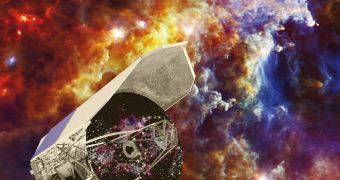Next week, the European Space Agency (ESA) will organize the ninth European Space Power Conference (ESPC), a meeting of space power system professionals around the world. Innovations and other advancements in these fields will be presented at the meeting.
Power systems are arguably the most important part of any spacecraft, since they dictate its capabilities, the amount and type of instruments it will be able to carry, the type of propulsion it will feature, its overall shape and design, and so on.
Navigation, avionics, propulsion and science systems are powered from single sources, most often solar cells attached to extensible panels on the sides of the space probe. Some robotic explorers are powered by nuclear energy, whereas others use ionized gas for the same purpose.
Without energy and energy-dispensing systems, all spacecraft become nothing more than space junk, and this is something that mission experts everywhere want to avoid when it comes to their vehicle.
The ESPC is meant to be a forum in which more than 250 experts in this field can meet and share knowledge and know-how in this regard. ESA organized the meeting in collaboration with the French Space Agency CNES.
This year's conference will take place between June 6-10, in Saint Raphaël, Côte d'Azur, France. The place was not chosen randomly, given that it is one of the most Sun-drenched spots on the planet.
For people who spend most of their lives taking about solar cells and harnessing our star's energy, there is no more appropriate place available. The most important representatives of the international solar generator community will attend this meeting.
““The ESPC is a key event for Europe’s space power community, taking place roughly every three years. Space agencies, business and academia come together to obtain a complete overview of current activities,” says ESA organizer Olivier Mourra.
“ESA, CNES and European space companies (including telecom firms) will be sharing lessons learned from their current missions and communicating future plans, while the 250 -plus attendees will also include representatives from CNES, the German Aerospace Center DLR, the Japanese space agency JAXA, the US Naval Research Laboratory and NASA’s Jet Propulsion Laboratory,” he adds.
“At the last conference in Germany in 2008, participants made the point that they needed efficient and recurrent products and new space power system components to remain competitive,” Olivier explains.
“ESA and the European companies took note and this time around will be presenting innovative solutions and new European products of that request,” the expert concludes.

 14 DAY TRIAL //
14 DAY TRIAL //